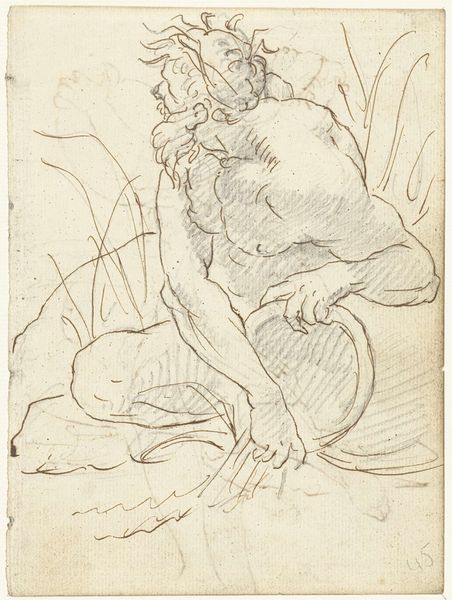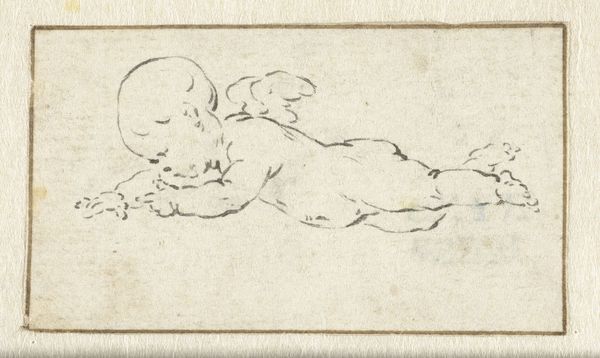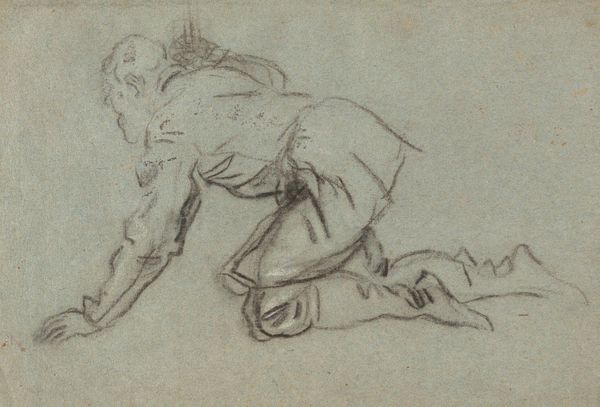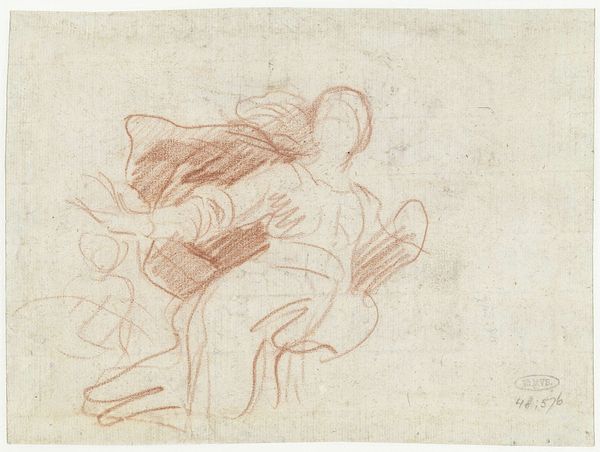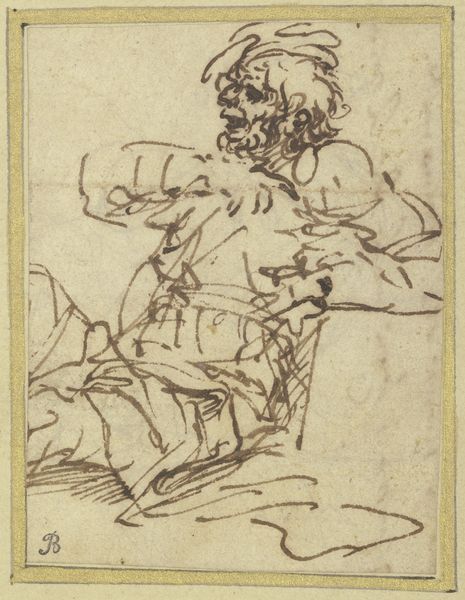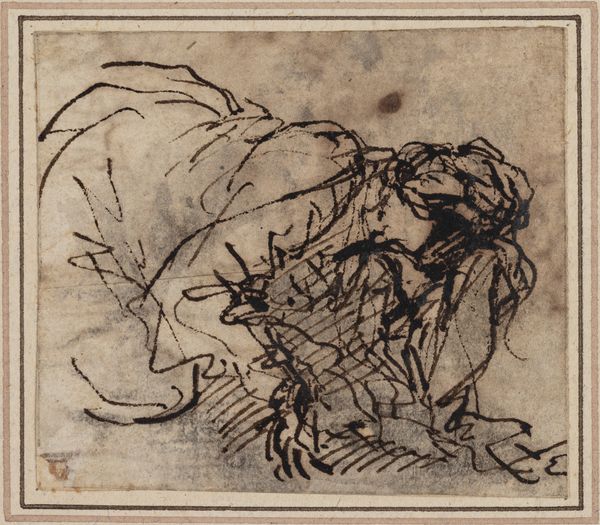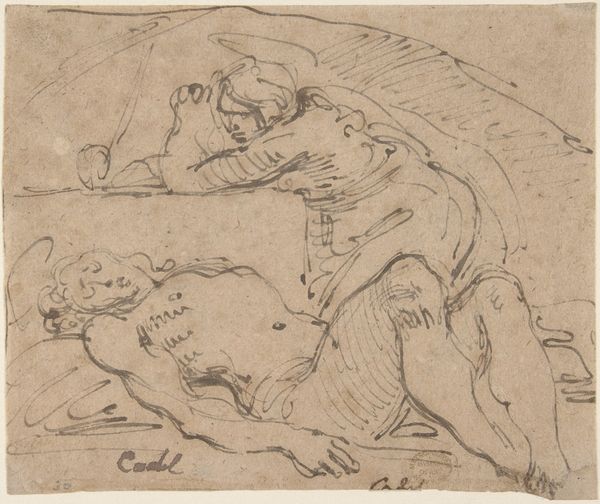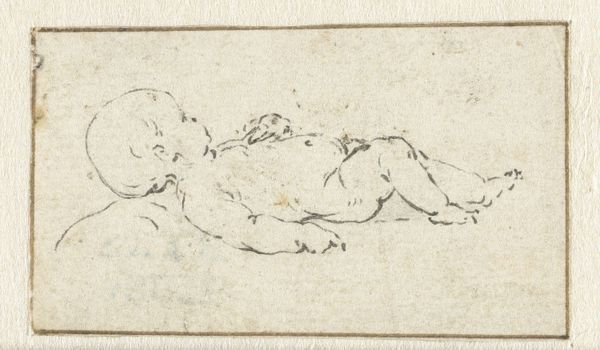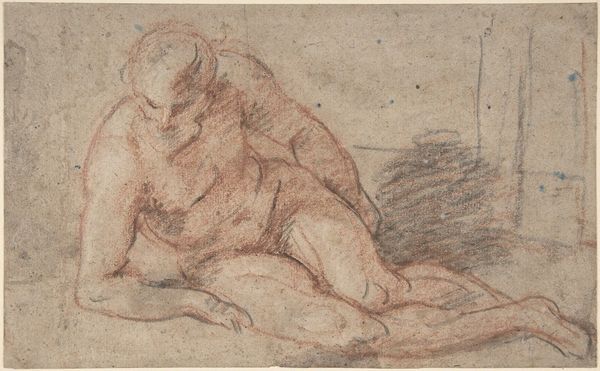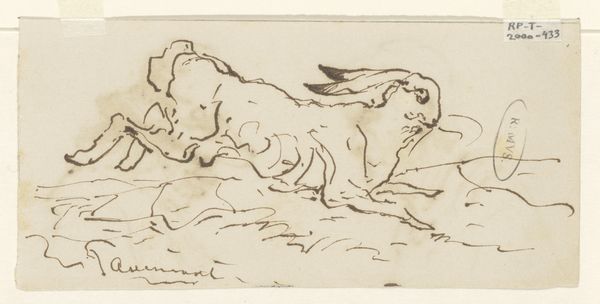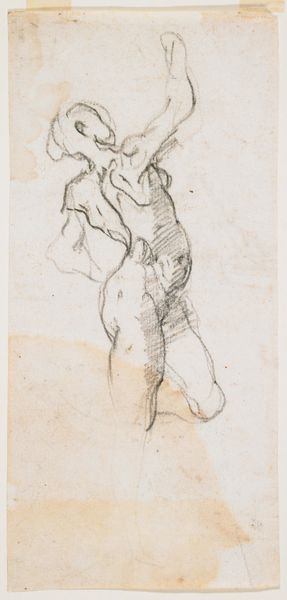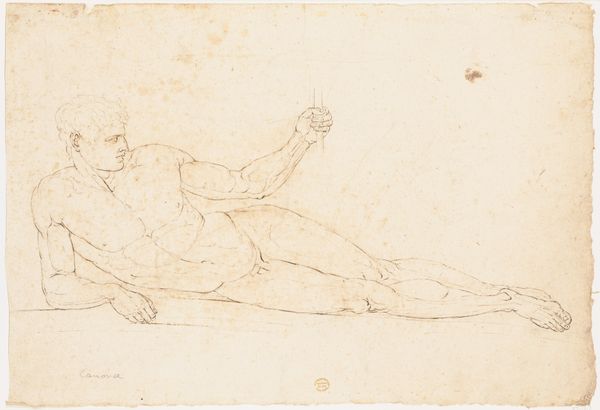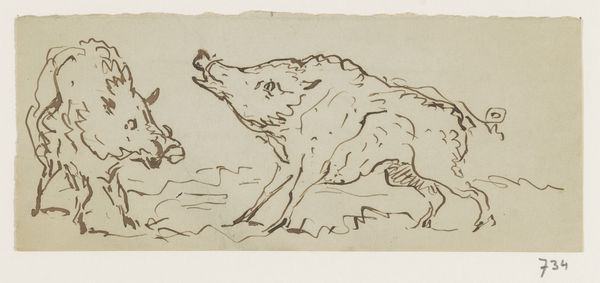
drawing, ink, pen
#
drawing
#
toned paper
#
light pencil work
#
quirky sketch
#
pencil sketch
#
figuration
#
11_renaissance
#
personal sketchbook
#
ink
#
ink drawing experimentation
#
pen-ink sketch
#
sketchbook drawing
#
pen
#
pencil work
#
history-painting
#
sketchbook art
Dimensions: height 71 mm, width 92 mm
Copyright: Rijks Museum: Open Domain
Curator: Here we have "David Beheading Goliath," a pen and ink drawing by Lambert Lombard, dating from around 1516 to 1566. It resides here at the Rijksmuseum. Editor: What strikes me immediately is the brutality, the immediacy of the sketch. David is really looming over Goliath in such an expressive way. It's visceral, but almost playful in its execution, like a practice run. Curator: It’s a preparatory drawing, likely for a larger composition. Lombard was a Renaissance artist heavily influenced by classical antiquity. I’d argue that David's pose, though hastily sketched, evokes classical heroism – the triumphant underdog prevailing. The drawing itself functions as a statement about political power and its vulnerability to disruption, especially within the 16th-century landscape of religious and social upheaval. Editor: The Goliath figure almost seems bloated, devoid of any grandeur despite his size. And there’s this power dynamic visualized in the starkest way, one that certainly resonates, especially if viewed through the lens of decolonialism and struggles against dominant structures. David, the 'smaller' party, violently overturning an oppressive force. It feels surprisingly contemporary. Curator: Yes, considering Lombard was working during a time when printmaking allowed for wider dissemination of imagery. How would this image of David beheading Goliath be understood by a public facing their own giants - powerful institutions, the Church? The symbolism of the underdog succeeding was hugely important in shaping a sense of collective agency. Editor: Right, this idea that justice, however brutal, can be achieved through direct action. This scene plays with a very interesting ambiguity. There's violence here, yes, but maybe it's the only answer when the scales are so disproportionately weighted against the oppressed. What is resistance if not a violent clash against a powerful oppressor, especially in those times of socio-political change? Curator: Exactly. Lombard’s work invites us to see historical narratives as still relevant to today’s power imbalances. The accessibility of this drawing allows everyone to engage and consider this message for themselves. Editor: Ultimately, I appreciate how this seemingly simple sketch continues to spark a necessary conversation about justice, power, and liberation. It seems straightforward, but it offers so many questions to consider and discuss.
Comments
No comments
Be the first to comment and join the conversation on the ultimate creative platform.
